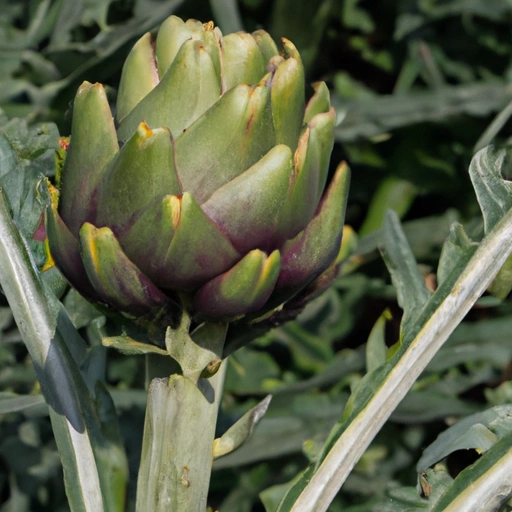Cardoon
Description

Cardoon, also known as Cynara cardunculus, is a thistle-like plant in the sunflower family, which is closely related to the artichoke. This unique vegetable boasts a flavor that is reminiscent of a bittersweet celery and artichoke. While its tough, fibrous stalks can be challenging to prepare, they are highly valued in many culinary traditions for their distinctive taste and texture.
Common uses
Cardoon is primarily used as a vegetable and is often cooked and served in similar ways to its relative, the artichoke. The stalks are the most commonly consumed part, but its leaves and flowers can also be used in recipes. In some regions, cardoon is also grown as an ornamental plant for its striking, thistle-like appearance.
Nutritional value
Calories
Cardoon is low in calories, with approximately 17 calories per 100 grams (3.5 oz).
Protein
This vegetable provides about 0.7 grams of protein per 100 grams (3.5 oz).
Fat
Cardoon is very low in fat, containing less than 0.2 grams per 100 grams (3.5 oz).
Carbohydrates
It contains roughly 3.3 grams of carbohydrates per 100 grams (3.5 oz), primarily in the form of dietary fiber.
Vitamins
Cardoon is a good source of vitamins, particularly vitamin B6 and vitamin C.
Minerals
The vegetable is also rich in minerals like potassium, calcium, magnesium, and iron.
Health benefits
Thanks to its nutritional composition, cardoon can contribute to a healthy diet. It's high in fiber, which aids digestion and may contribute to heart health. The presence of vitamins and minerals supports overall well-being, from immune function to bone health.
Potential risks
While cardoon is safe for most people, those with certain plant allergies should exercise caution. Additionally, because of its fibrous nature, it must be prepared properly to ensure it is palatable and digestible.
Common recipes
Cardoon is often featured in soups, stews, and casseroles. It can be blanched and served with a dipping sauce or incorporated into a gratin.
Cooking methods
Before cooking, cardoon stalks should be trimmed and soaked in acidic water to prevent discoloration. They can be boiled, steamed, or braised until tender.
Pairing with other ingredients
Cardoon pairs well with robust flavors such as garlic, anchovies, and strong cheeses. It complements creamy sauces and can be balanced with the acidity of lemon or vinegar.
Summary
Cardoon is a versatile and nutritious vegetable with a long history in Mediterranean cuisine. Its unique flavor and texture make it a delightful addition to various dishes, and it can be adapted for use in both American and European recipes. With preparation, cardoon can add both nutritional value and culinary interest to your meals.